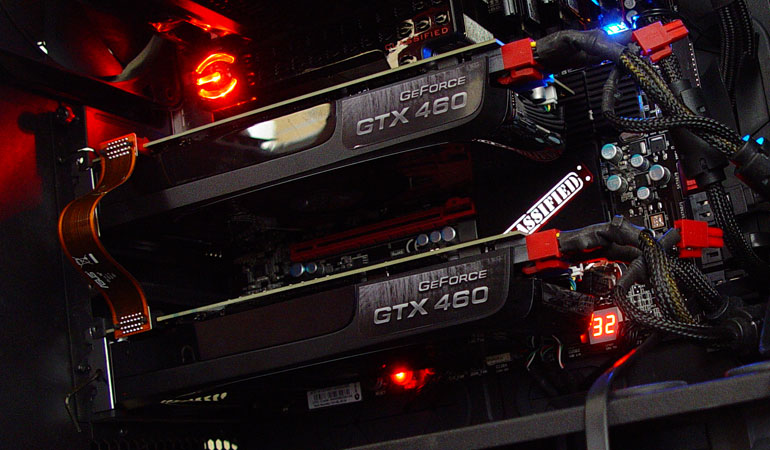Introduction

GeForce GTX 460 768MB SLI gets tested
The release of the GeForce GTX 460 is most definitely an interesting one as the price/performance ratio is charming to say at the very least. With no less than 336 Shader processors clocked at 1350 MHz and some decent memory bandwidth, it packs punch. Obviously there's the option go for Multi-GPU gaming, though limited to 2-way SLI (two graphics cards maximum) you can easily double up that shader count and thus performance. Now say that you pick two 199 USD GTX 460 cards with 768MB of memory, doubled up in SLI two of these puppies would bring seriously more performance to the table than a much more expensive GeForce GTX 480. And sure we understand that with 768MB available per GPU there are some limitations as anything after 8xAA will become more difficult in the higher resolutions. But if you are like 99% of the gamers out there, you have a monitor resolution up-to say 1920x1200 and stick to 4xAA or 8xAA -- if you fit that demographic the GeForce GTX 460 768MB setup in SLI might be a superb treat in terms of value for money.
Multi-GPU gaming has become popular over the past few year thanks mostly to NVIDIA's SLI solutions initially, and obviously later on ATI Crossfire joined that path as well. So we take two GeForce GTX 460 cards and place them into SLI mode. But also we'll throw in a combo of two Radeon HD 5830 cards setup in CrossfireX, the direct competitor to GTX 460 in both price and performance. Both armed with the very latest drivers, patches and games.
So another thing made us wonder what would happen if we took two cheaper (768MB) GeForce GTX 460 graphics cards, I mean ... you save money over say a singe GTX 480, yet could gain much more perf in theory, that could be very significant and as such we are going to check that out as well.
This article will cover SLI performance among the new GTX 460 cards with 768MB in several games, we look at performance scaling and also we'll check ATI versus NVIDIA with the R5830, to see what is the best solution. Not just that, we'll also look at temperatures, power consumption and noise levels.
Over the next few pages we'll tell you a bit about multi-GPU gaming, the challenges, the requirements and of course a nice tasty benchmark session. Have a peek at the coolness in the photo below and then let's startup this article.

